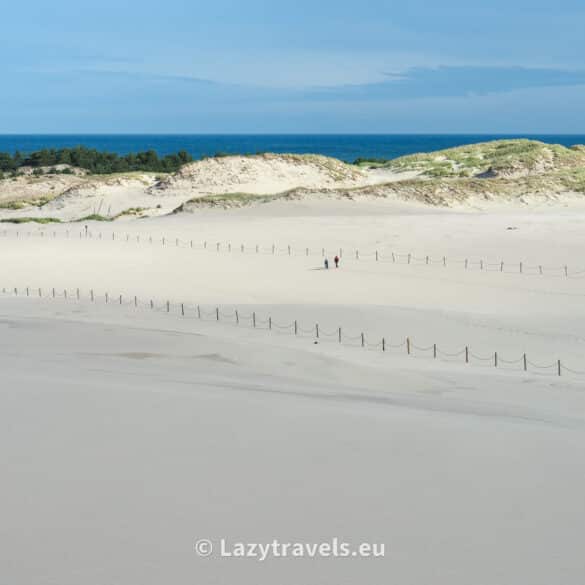The Elbląg Canal is an exceptional attraction in Poland. The system of slipways and locks built in the 19th century by Prussia is still in use today. It carries tourists along the „ship on the grass” route, not goods. A few hours’ cruise with beautiful views is all it takes to see why this is such a unique attraction.
I had been planning to visit the Elbląg Canal for years. I had been here before, during the wedding of my then-flatmate. He gave the guests a wonderful surprise with this cruise! Now I wanted to see this 19th-century engineering marvel once again and at my leisure. I had been planning this tourist attraction for three years, but I finally made it! One way cycled there along the Elbląg Canal and part of Lake Druzno, and on the way back, I put my bike on the ship and I sailed along the canal towards Elbląg, admiring the views.
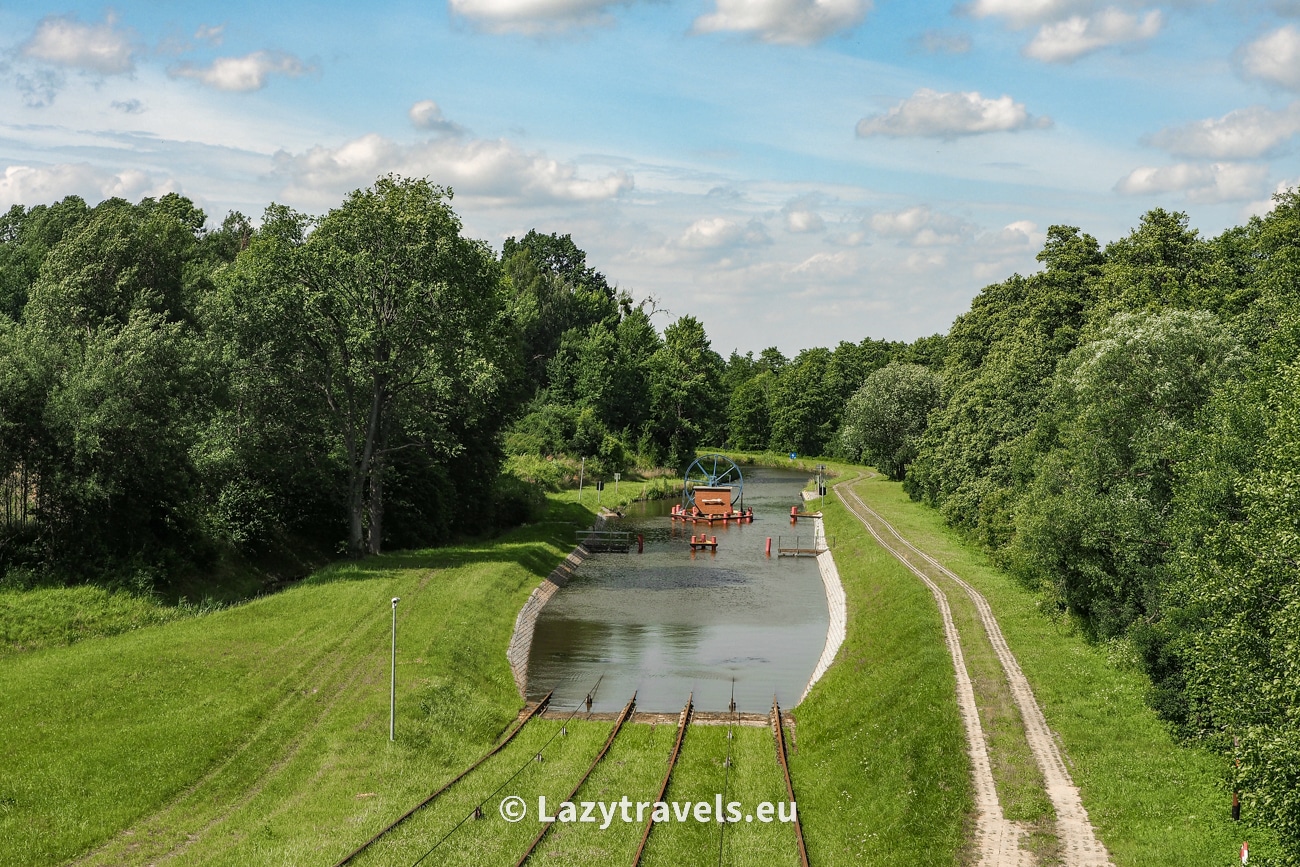
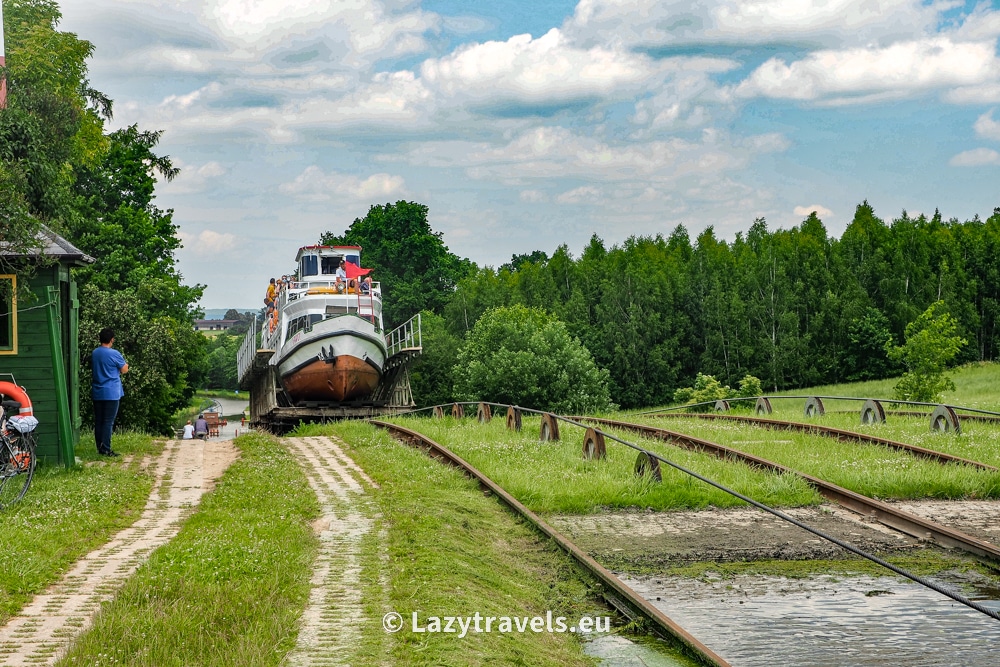
Elbląg Canal slipways
You will see five slipways on the Elbląg Canal. They are in order as you sail from Elbląg.
Całuny | length 352m | difference in level 13.8m
Jelenie | length 433m | difference in level 22m
Oleśnica | length 479m | height difference 24.2m
Kąty | length 404m | height difference 18.9m
Buczyniec | length 490m | height difference 20.6

Elbląg Canal – how the slipways work
Slipways are simple machines. Ships are raised and lowered by steel ropes. When one ship is lowered, another can be raised. This is not done with the help of powerful engines. The energy to raise and lower the ships comes from powerful wheels. Water is poured onto these wheels from above. These wheels move huge rollers. Ropes are wound or unwound onto these rollers. Electricity is not used. This makes them as environmentally friendly as possible and relatively cheap to operate.
Ships are transported by special platforms on the slipway. The ship approaches the platform, and a steel trolley moves up and down the slipway. The ship is secured to the trolley with ropes before it’s transported.The ship’s crew signals that the ship is secured and ready for transport by ringing a gong.The crew in the wheelhouse pulls a rope, which activates a signal in the engine room. The operator can then set the powerful wheels in motion.Everything is done the same way as it was over a hundred years ago and is completely independent of modern technology.
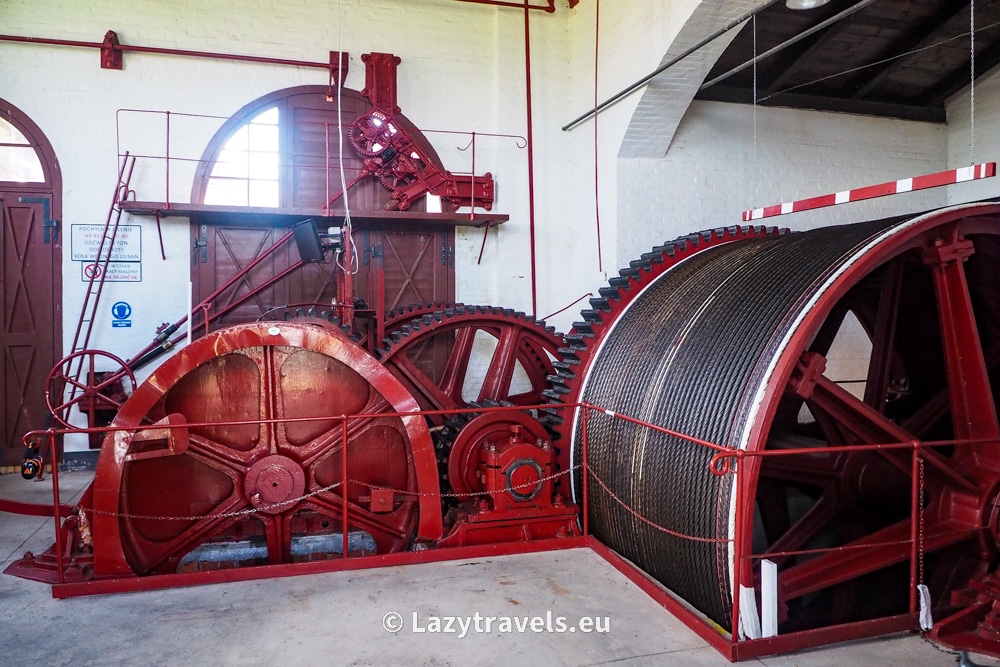
Enter one of the engine rooms and watch it in action. You can see the work through the open door, and the information boards say that the maximum weight of the vessel that can be pulled in is 50 tonnes.The Elbląg Canal was renovated a few years ago. So successful, in fact, that shortly after the renovation, some of the new equipment broke down, interrupting the operation of the canal and tourist cruises – unthinkable a few hundred years ago. However, it turns out that in some areas, humanity has made 'regressive progress’ – especially when it comes to quality. What a shame.
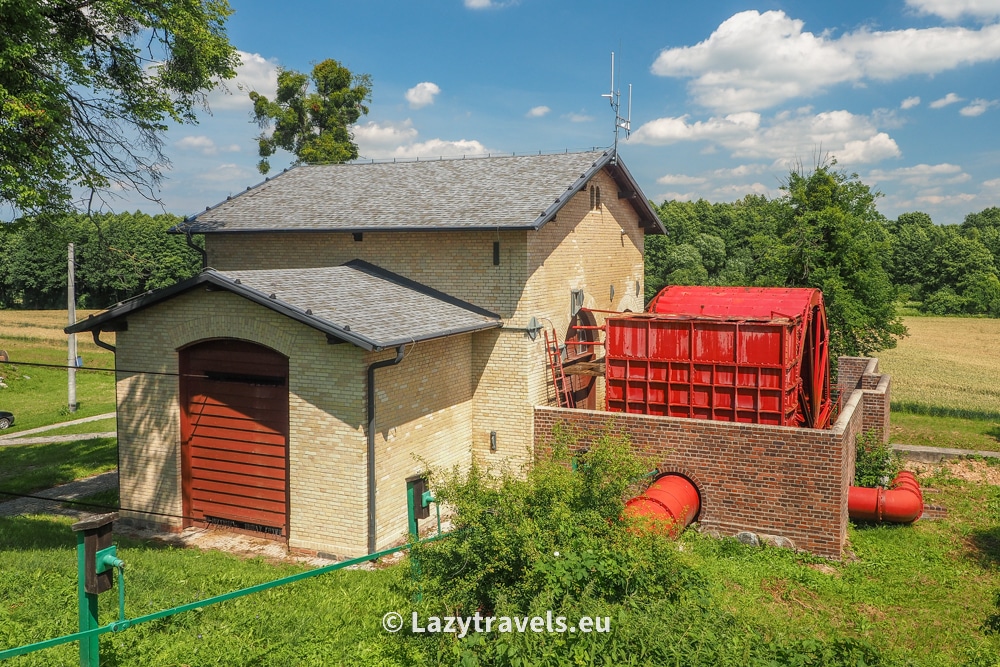
Cruise on the Elbląg Canal
The fleet of ships that regularly sail on the canal is not the youngest, but despite their age, the ships built in the 1960s are said to be in good condition and rarely break down. The ships have two decks, so if it rains, you can take shelter below deck. In good weather, everyone sits upstairs to admire the surroundings from above.
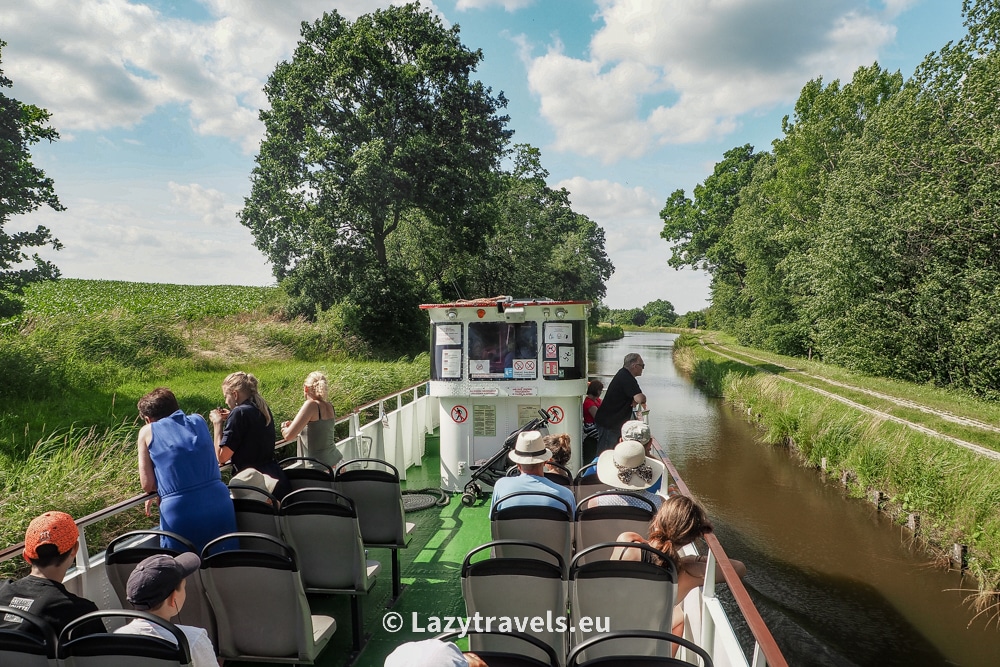
During the cruise, I experienced perfect weather—sun and light clouds.I started the cruise from the slipway in Buczyniec, where I boarded the ship with my bike.Despite the widespread presence of the coronavirus in Poland at the time, there was a large turnout, and almost all the seats on the upper viewing deck were taken.The cruise starts with a bang!The ship is being lowered down the Buczyniec slipway, the perfect time to learn how it works. The captain’s manoeuvres and the „parking” of the ship on the trolley attract everyone’s attention. Then, we descend 20.6 meters on a slow journey literally on the grass. There will be four more attractions of this type, and with each one, people’s interest in how it works and looks decreases.
Everyone’s looking to the sides, but for different reasons. The narrow canal we’re sailing on and the local landscape are equally impressive. The terrain is picturesque, undulating, and the fields of grain, meadows, and forests are endless. It’s not surprising that trees often grow right next to the canal. They’re impressive, but not unusual. In Prussia, avenues of trees were planted along all roads and waterways, like this canal.
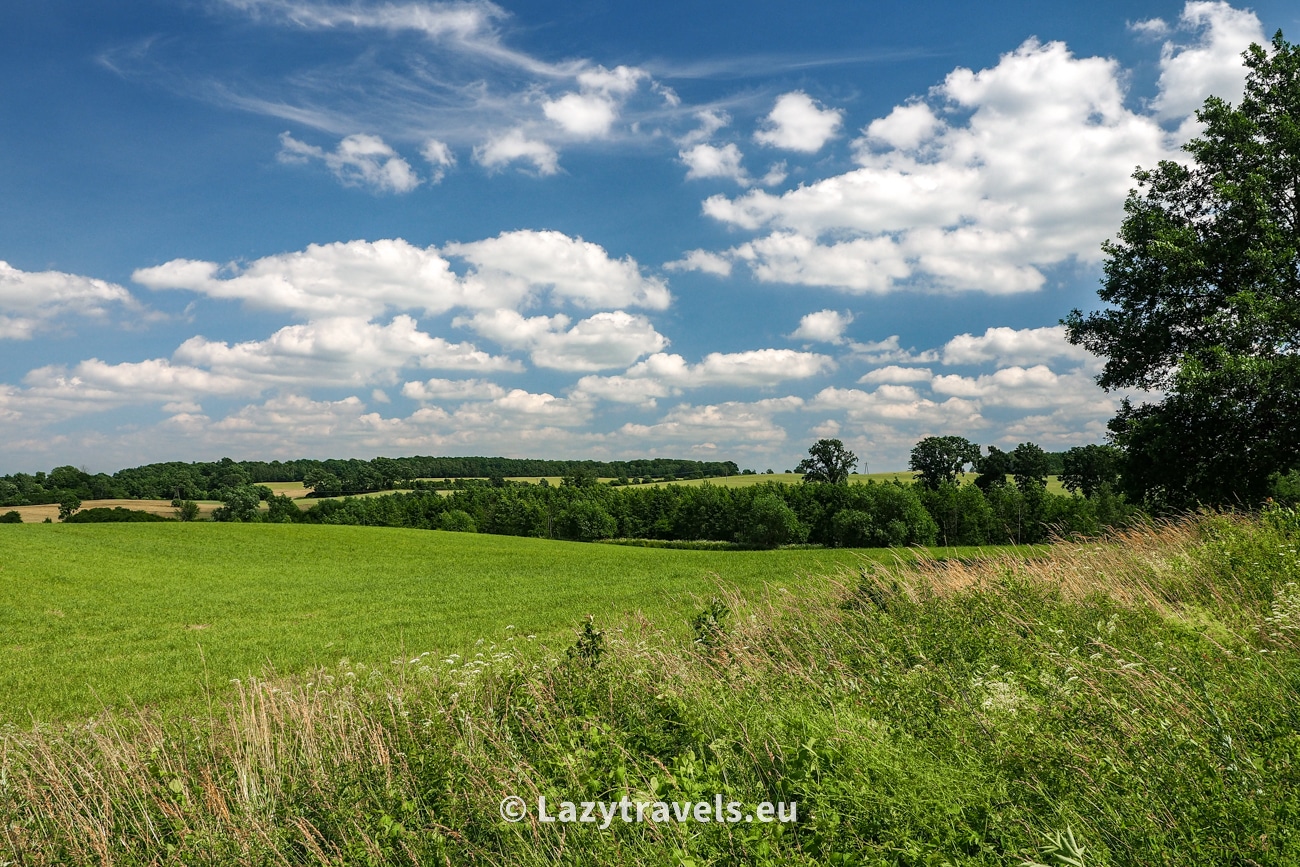
The windmills on site appear to be slowly grinding the air with their propellers.When I have had enough of the slipway, with all its spinning wheels silently lowering us further and further down, we arrive at the next tourist attraction.
The captain, who also serves as our guide, informs us that before entering Lake Druzno, we will pass a large field. This field was created during the time of the Teutonic Order, and in the past, the water from this depression was pumped out by windmills. Today, it is a pump system. It’s incredible that something built centuries ago has endured in its original state.
A cruise on Lake Druzno
Lake Druzno is a special place, a strict reserve where the only human activity is along a narrow sailing trail. The rest is left to nature, and nature thrives here. I regret not having binoculars to observe the herons lazily standing around or the eagles sitting in the trees, but there are plenty of birds, making it a bird paradise for ornithologists.
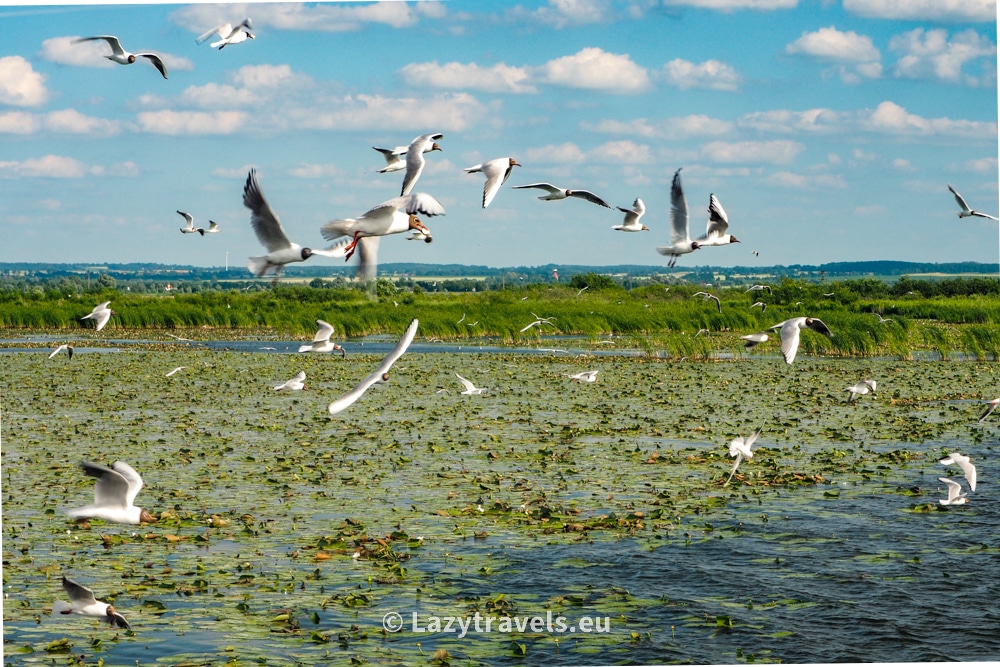
I observe it as a layman, and what I see is, above all, a forest of reeds. The lake is very shallow, with a water layer that is only a few or several dozen centimeters deep. But underneath, there are several meters of mud, formed by plants that have died for several hundred years. The first mentions of Lake Druzno warned that care should be taken in winter, because when driving a sledge across the frozen lake, one could come across areas where exploding gases gathered. In these places, the ice was either absent or very fragile, making it possible to fall into the water. Today, due to global warming, such winters no longer happen.
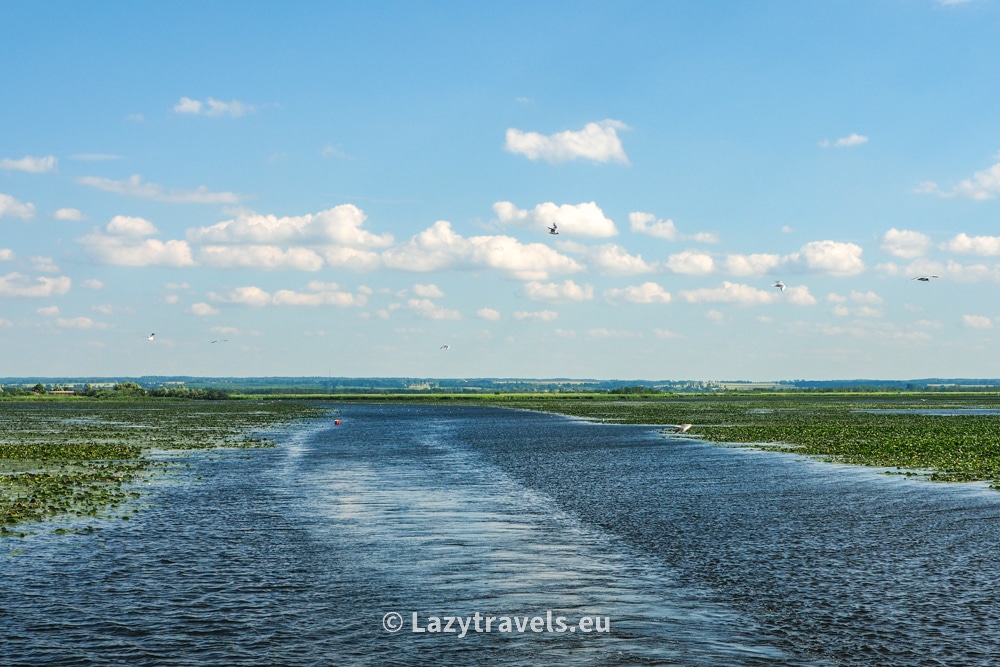
You should go to the lake today because in a few hundred years it won’t be there anymore. It’ll be completely overgrown, dry up, and turn into a swamp or peat bog. Fortunately, today it pleases the eye with its vast reed beds and shallow water overgrown with floating plants. You can hear the loud squawking of seagulls in your ears as they calmly watch the herons from the reed beds.
History of the Elbląg Canal
The Elbląg Canal was not built to benefit tourists, it was built to facilitate business. Tourists appeared later as an addition to the main business.The canal was built to transport grain and wood from the forests and fields of Warmia to Elbląg, from where the goods were exported by sea.
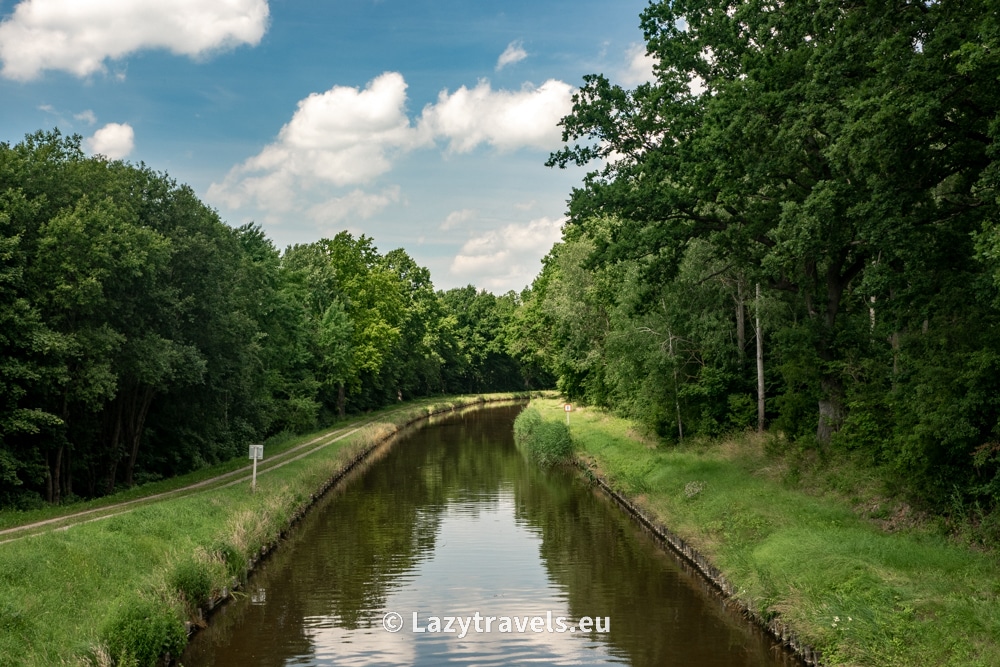
Initially, the designers, Steenke and Severin, considered a system of locks to overcome the 100-meter difference in level, but this would have required 32 structures, a cost prohibitive endeavor. Georg Jacob Stenkee, a designer commissioned by King Frederick William III, chose a different solution when he started designing the canal in 1837. He came up with the brilliant idea of building a system of slipways that would transport barges/ships with goods up and down on special trolleys.
Work began on October 22, 1844, and just 16 years later, in 1860, four slipways and a canal system were almost complete. In August of that year, the first ship traveled through the canal.However, the project wasn’t finished until 1961, in late autumn. This was a massive hydraulic engineering project, and they even adjusted the water level in the surrounding lakes to make it work. In some places, the water level dropped by as much as 5 meters! Even today, it’s clear how huge and responsible the work was. When you travel by boat and look closely to the sides, you’ll see that the canal runs a few meters above the surrounding houses and fields.

The last structure built on this section of the Elbląg Canal, which can be navigated on a cruise to or from Elbląg, is the Całuny slipway. Constructed in 1881, it was built at a time when the emerging network of land and railways began to compete with the waterway.
The Elbląg Canal, also known as the Oberland Canal, connects Elbląg and Iława and has numerous branches, making it a complex waterway system. Its final length is not a matter of dispute, but determining the total length, including the branches, is challenging.

Facts about Elbląg Canal
The canal system is 151.7 km long. The difference in height between the slopes and locks is 103.4 meters, and the route runs through canals, slopes, locks, and natural lakes.Focus magazine reports that the cost of building the canal was higher than constructing the Eiffel Tower: the tower cost 2.2 tons of gold, while the Elbląg Canal cost 2.4 tons.
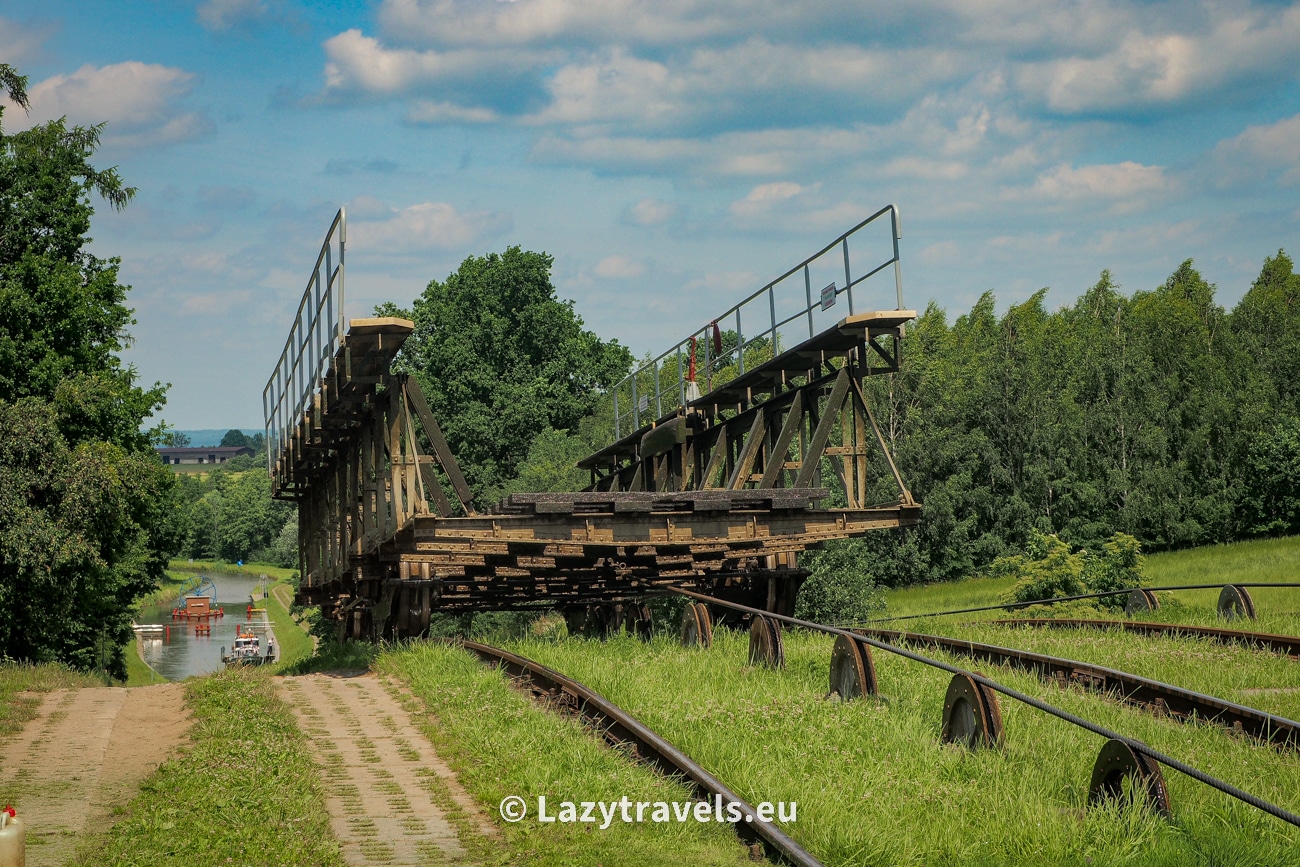
Elbląg Canal – route, duration and ticket prices
Today, the most popular cruises, which take about 5 hours, run from Buczyniec slipway to Elbląg or from Elbląg to Buczyniec slipway. However, there are no cruises that would allow you to see the entire Elbląg Canal. There are also shorter cruises, e.g. for a walk on Lake Druzno or only from Buczyniec to the Kąty slipway. This is a great option for those who don’t have much time but want to experience what it’s like to ‘sail’ on the grass of the slipway.
The price of a ticket for the longest route from Elbląg to the Buczyniec slipway is PLN 169 for a normal ticket and PLN 149 for a reduced ticket, e.g. for a child over 4 years old. Children under four years of age must have a ticket for PLN 49.
A shorter cruise (two hours) to see three slipways, i.e. Buczyniec to the Oleśnica slipway and back to Buczyniec, costs 137 PLN for a standard ticket and 123 PLN for a reduced ticket.
More information about ticket prices on the Elbląg Canal can be found on the Ostróda-Elbląg Shipping website.
Elbląg Canal – accommodation
Elbląg is the perfect place to stay, as it is the starting or ending point of a cruise on the Elbląg Canal. If you start your cruise in Elbląg, a bus will be waiting for you at the end of the route (tickets can be bought together with the boat ticket, also online). The bus will take you to the point where you departed. Therefore, if you live somewhere in Warmia and have travelled to the slipway in Buczyniec by car, you will be able to return to it without any problems.
In Elbląg, I recommend staying at the Atrium Hotel. It is located almost in the centre of the old, though rebuilt, part of the city. Right next to the marina, where ships depart along the Elbląg Canal.
